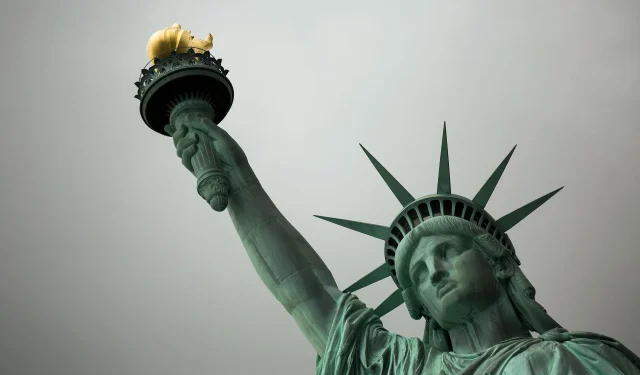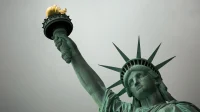In a thought-provoking statement reported by The Guardian on March 17, Raphaël Glucksmann, a prominent member of the French European Parliament, suggested that the United States ought to return the Statue of Liberty to France. This remark was made during a gathering of his center-left political movement, Place Publique.
Glucksmann elaborated on his statement, asserting that France should reclaim the statue, as he believes the U.S. has strayed from the core principles of liberty and democracy that initially inspired its donation.
Historical Significance of the Statue of Liberty
The Statue of Liberty was a gift from France, commemorating the 100th anniversary of American independence in 1876. Its unveiling represented not only a celebration of American ideals but also a testament to the enduring friendship between the two nations.
President Grover Cleveland officiated the statue’s dedication in New York Harbor on October 28, 1886. As detailed on the Statue of Liberty’s official website, the vision behind this monumental piece stemmed from Édouard René de Laboulaye, a French political thinker, who sought to symbolize the deep-rooted ties between France and the United States while honoring the legacy of the Declaration of Independence.
Reflecting on contemporary societal issues, Laboulaye was reportedly motivated by the recent abolition of slavery in the U.S., which reinforced the nation’s commitment to the values of liberty and freedom. Designed by the renowned French sculptor Frédéric Auguste Bartholdi, with engineering support from Gustave Eiffel, the statue has become an emblem of hope and liberty.
Bartholdi’s initial concept included a torch flame made of solid copper, intended to gleam brilliantly in natural light. Over the years, however, the torch has undergone several modifications. In 1886, portholes were cut into the base to illuminate it from within. By 1916, copper was replaced with amber-colored cathedral glass in many areas, further transforming the original design.
The early 1930s saw the installation of an advanced lighting system featuring projectors, altering Bartholdi’s original vision yet again. Today, the statue continues to draw millions of visitors to its location at the entrance of New York Harbor.
Returning to the present, Glucksmann’s call for the statue’s return aligns with his broader criticism of U.S. policies, particularly under former President Donald Trump. Glucksmann has voiced concerns over Trump’s alleged support for Russia, which he argues undermines the principles of liberty championed by France.
“We gave it to you as a gift, but apparently you despise it. So it will be just fine here at home..”
Glucksmann also expressed his views on U.S. research institutions, criticizing cuts that he believes threaten the nation’s innovation potential:
“If you want to fire your best researchers, if you want to fire all the people who, through their freedom and their sense of innovation, their taste for doubt and research, have made your country the world’s leading power, then we’re going to welcome them.”
In his remarks, Glucksmann extended his criticism to far-right French politicians, whom he labeled as a “fan club”for Trump and Elon Musk, reflecting a growing discontent with political affiliations that oppose progressive ideals.
Responding to these claims, Trump’s White House press secretary, Karoline Leavitt, dismissed Glucksmann’s remarks, reinforcing that the U.S. intends to retain the Statue of Liberty while referring to him as a “unnamed low-level French politician.”


